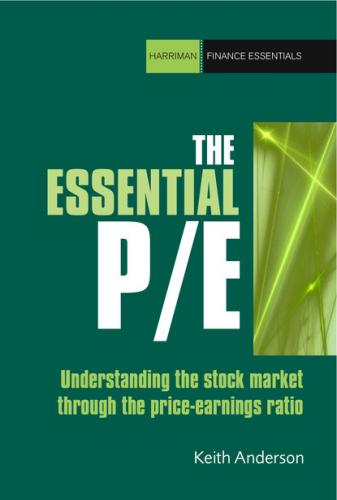In other words, an investment of 195p per share costs about seven times’ earnings per share. This is on the low side, even for a small company, but it is still fairly near the centre of the cloud in Figure 2.
PART II. The Value Premium and the P/E
In Part I we learnt the basics of what the P/E is and how it became popular during the 20th century. In this Part we move on to the much more contentious area of how it is used today.
Strangely, when the P/E became popular in the 1920s in the US, there was no statistical evidence that low P/E companies would give you better returns. There was of course the idea that for a P/E of 10 you are paying £1 for every 10p of annual earnings, and for a P/E of 20 you are paying £2 for those same earnings. You would therefore expect high P/E stocks to have better prospects for future earnings growth. Without this, if your investment prospects were in a steady state with no particular future growth expected, then it would make sense to pay the lowest P/E possible. Other things (most importantly, dividends) being equal – why pay £2 for 10p of earnings when you could pay £1?
It was only in 1960 that anyone suggested that low P/E stocks as a class will tend to give better long-run returns. This is what the ‘value premium’ means: value stocks, identified by having a low P/E, outperform glamour (high P/E) stocks. As we shall see in a later chapter, the P/E is only one of the ratios you could use to identify such stocks.
As the idea came from an investment practitioner, not a finance academic, it was not rigorously tested for some years. What’s more, the whole idea of markets being efficient was just getting started in the 1960s. If markets are efficient and stocks are efficiently priced then it should not be possible consistently to beat the market, whatever investment rule you follow. The mere suggestion that any particular class of stocks could consistently outperform the rest was unwelcome, particularly coming from an outsider.
Nevertheless, the findings have been backed up by hundreds of academic papers over many differing time periods and countries: over the long-term and on average, a portfolio of low P/E stocks will outperform the average of the market by around 3% p.a., and high P/E stocks will underperform it by the same margin. I am unaware of any paper that reports the opposite, i.e. that high P/E stocks outperform, at least over any long time period of a decade or more.
The outstanding argument is over whether these outperforming low P/E stocks are in some way riskier. Nobody should be able to get a free lunch of higher returns without some drawback, and the natural response is that low P/E stocks must be riskier in some way to account for those superior returns. Other studies have suggested ways in which this riskiness might make itself apparent, but there is no general agreement.
Many investors believe, on the basis of this evidence, that a company having a low P/E is a good sign for future returns. The P/E is just one of the ratios that these ‘value investors’ use to identify their stocks. On the other hand are those who believe that the market is in general an efficient place and that such stocks would have been snapped up long ago. (There is also plenty of evidence to back up their view that the market is by and large efficient.) According to these people, if you buy low P/E stocks (or any other company identified by its ratios as a ‘value stock’) then you are probably just buying a pig in a poke: it deserves to be cheap and the market has marked it down. Your money would be better spent by investing in a tracker fund, and your time better spent by searching for a tracker fund that follows the market as closely as possible for the least cost.
This fundamental split between the philosophy of value investors and believers in market efficiency appears in the world of academic finance just as in the real world of investment.
In this Part I shall introduce what value companies are, what value investing is and some of the famous people who do it. We then have a detour into efficient markets theory and why this value premium is an offence against this traditional orthodoxy. I cover the evidence on the returns when you use the P/E to identify value companies and the risks involved, hopefully without you feeling you might as well read an academic paper. I skip through some of the later papers that try to reconcile market efficiency and the value premium. Since all of these are looking at US shares, I finish by assessing how much all this is reflected in UK work.
Конец ознакомительного фрагмента.
Текст предоставлен ООО «ЛитРес».
Прочитайте эту книгу целиком, купив полную легальную версию на ЛитРес.
Безопасно оплатить книгу можно банковской картой Visa, MasterCard, Maestro, со счета мобильного телефона, с платежного терминала, в салоне МТС или Связной, через PayPal, WebMoney, Яндекс.Деньги, QIWI Кошелек, бонусными картами или другим удобным Вам способом.
